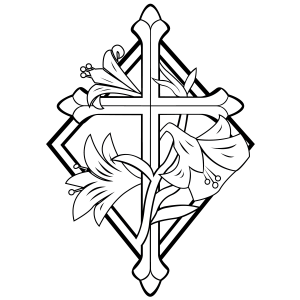First Sunday After Easter: Quasimodogeniti
The celebration of Christ’s resurrection continues as we hear about further appearances of Christ to His disciples. We who have celebrated the Lord’s resurrection are also influenced by its message to increase our fervor and zeal for the Lord and to grow in our life and conduct as God’s baptized children who put off the old Man and put on the new. The word “Quasimodogeniti” is the first words of 1 Peter 2:2, meaning, “as newborn babes.” At Easter, we have been born by faith to a new holy life, nourished by the Gospel and directed by God’s Word.
 The Introit: The Introit is taken from 1 Peter 2:2, which describes Christians as “new-born babies” who feed on the pure milk of God’s Word and taste the Lord’s goodness. We, the baptized babies, are to listen to God’s Word and show the fruits of faith in their lives as they trust in the crucified and risen Savior.
The Introit: The Introit is taken from 1 Peter 2:2, which describes Christians as “new-born babies” who feed on the pure milk of God’s Word and taste the Lord’s goodness. We, the baptized babies, are to listen to God’s Word and show the fruits of faith in their lives as they trust in the crucified and risen Savior.
The Collect: The high festival of Easter is more than a religious emotion of joy. Our celebration affects our life as we bring forth the fruits of our baptismal rebirth into our every day lives.
The Epistle: The Easter message is about Christ’s victory over sin and death. Our faith in the risen Christ also “overcomes the world” and its temptations, sorrows, and doubts. God’s witness is His Word, which testifies about His Son and His work of salvation. Those who believe in the risen Savior have forgiveness, the certain witness of God, and life eternal.
The Gradual bids that we consider again the facts of Easter: Jesus our Passover Lamb who was sacrificed for the sins of the world; He now is risen, the stone of the tomb is rolled away.
The Proper Communion Preface for Easter praises Jesus for His resurrection from the dead. As the Paschal Lamb, Jesus was offered once as a sacrifice on the cross to take away the sins of the world. By His death, Jesus destroyed sin and death. By His rising to life, Jesus has restored to all who believe on Him the everlasting life that was Adam’s before he fell into sin. Through the Lord’s Supper, we receive Christ’s risen body and blood to assure us of God’s forgiveness and His promise of eternal life.
The Paraments are white to symbolize the joy and gladness that the message of Jesus’ rising from the dead gives us. It also symbolizes that righteousness that Jesus won for us on the cross that He gives us through faith in Him. As Jesus lives in glory, the while color reminds us of the glory and joy that He will give us in heaven